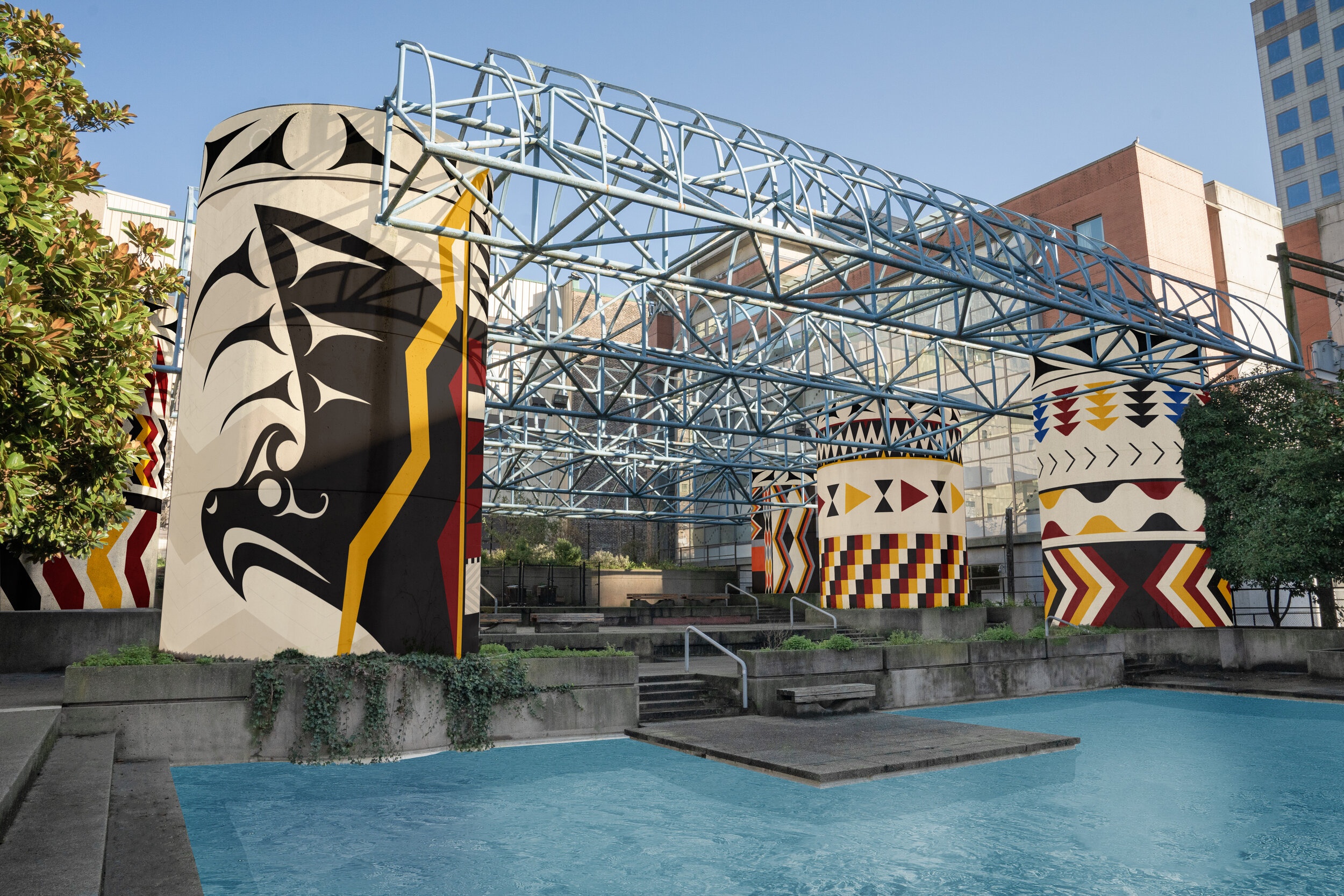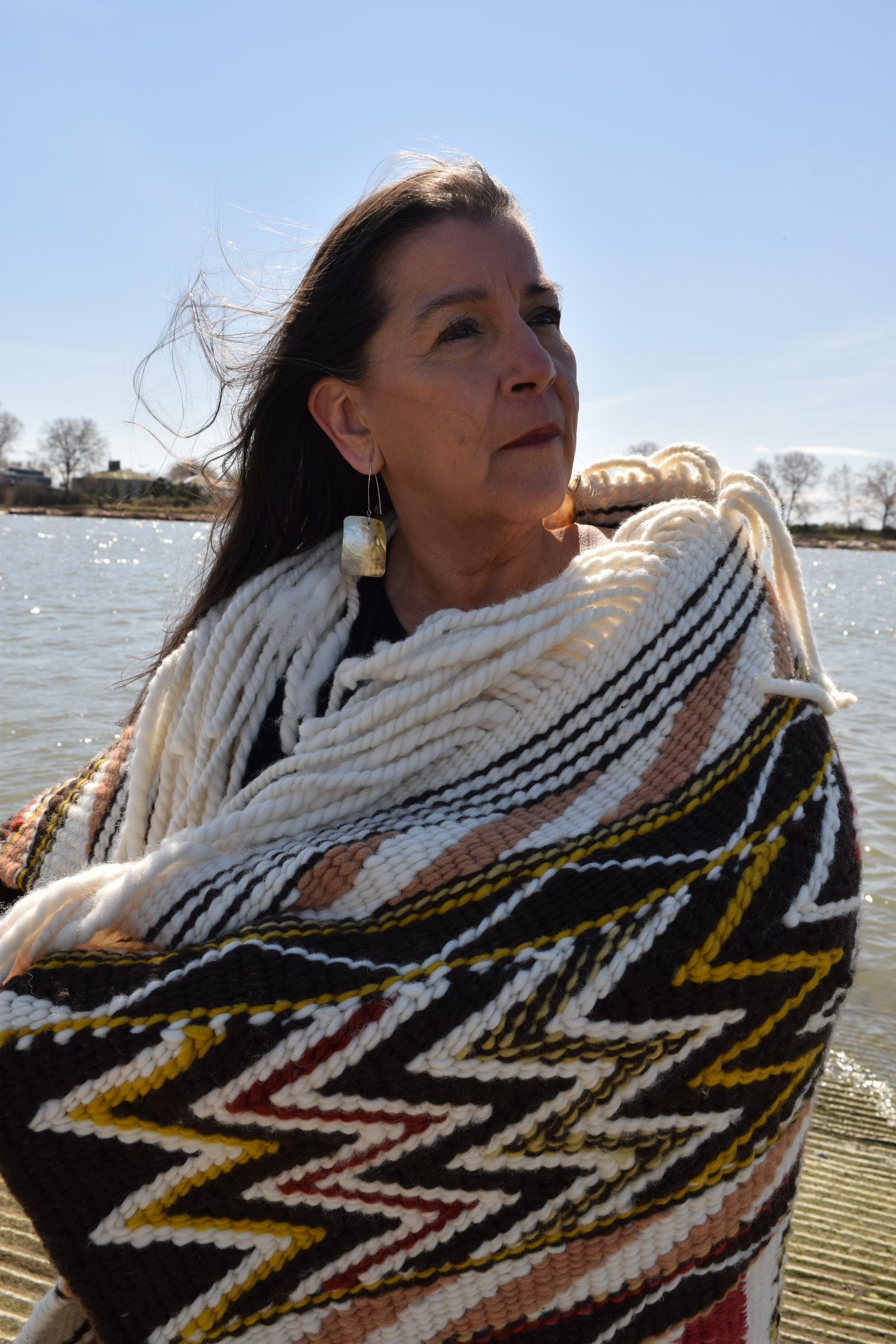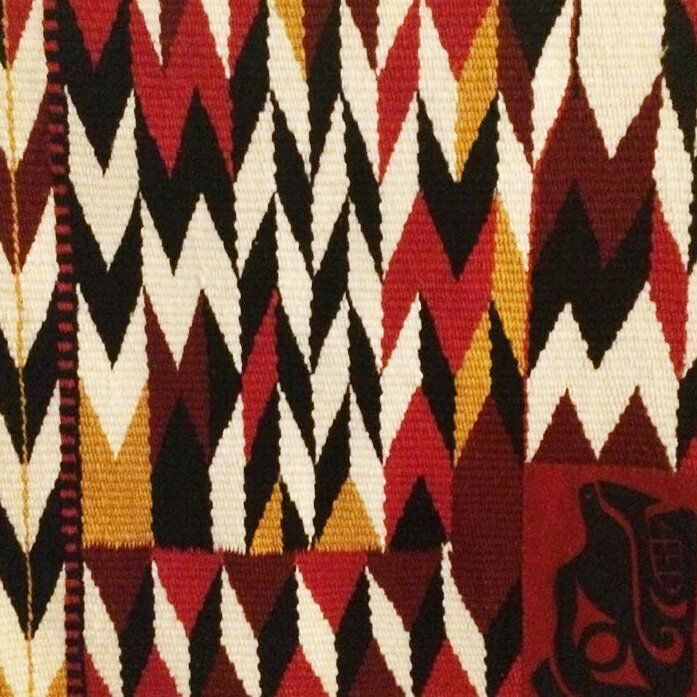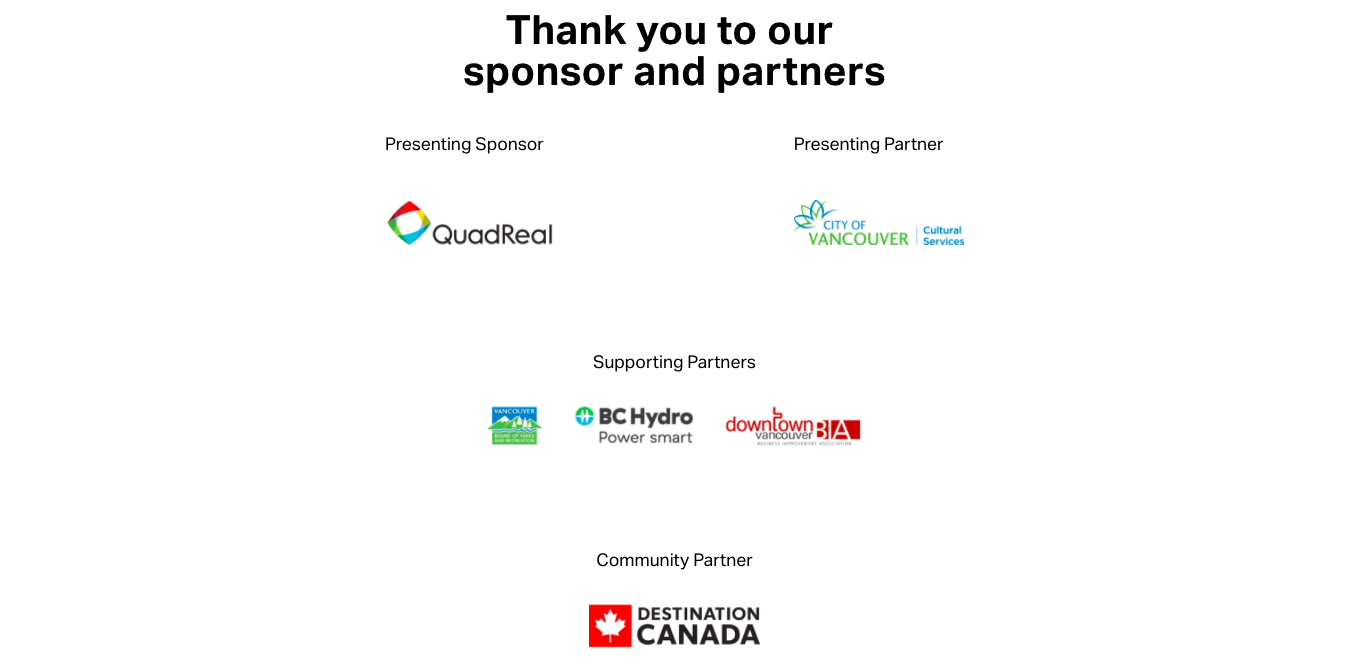Interview: Blanketing the City Artist Debra Sparrow
Blanketing The City is a public art mural series and Reconciliation process designed by acclaimed xʷməθkʷəy̓əm (Musqueam) Weaver and Graphic Designer, Debra Sparrow in collaboration with Vancouver Mural Festival. Begun in 2018, the series boldly affirms the resurgence and importance of Coast Salish weaving on these lands, and directly combats the ongoing systemic suppression of Indigenous visual culture.
This project arose from conversations with Debra Sparrow who challenged the Vancouver Mural Festival to find more foundational ways to observe cultural protocol and acknowledge the visual culture of the people who have thrived in these lands for thousands of years and continue to create and evolve their culture on these territories. The direct result of our ongoing conversations over the years is the mural series: Blanketing the City, where VMF gives a central place in the festival to Coast Salish weaving traditions that are shared by the Musqueam, Squamish and Tsleil-waututh Nations and many other Nations in the Pacific Northwest. With the installation of large scale murals made by Coast Salish weaving artists this series aims to contribute to the reversal of the systemic suppression of the culture of the local nations in the public spaces of Vancouver.
We reached out to Debra so she could share more on her journey with Blanketing the City and what it has meant to her.
VMF: What is Blanketing the City and why is this project important?
DS: “Blanketing the city is an honour for our people here, it is a reflection of how we identify ourselves and how important blankets are in Musqueam culture and every aspect of our life and history, its about our values, its about how we stand…
When I first saw Adrian and Dave [VMF co-founders] on the Georgia Straight talking about the Mural Festival I asked them “where was Musqueam in the Mural Fest?” and they responded to me and we had a conversation about everything and we decided to take that opportunity to do exactly what I was sort of hoping for in terms of wrapping the whole city, and it [started] at Granville Island. And so, we worked with Gabe who partnered with me as I designed them and he was the person who turned them into the graphics and they were applied to the pillars and it was a pretty significant, you know… I felt like when I first saw them that, I was honoured that my ancestors would be there standing with me and taking their place in the place where one of our villages would be, and when I say our village, I mean the village of our three tribes together where we met as a gathering place.
So these pillars were really significant to really make a mark and hold that bridge up and hold up our people in the ways we hadn’t been held up, and you know, it sort of catapulted the idea I had to blanket and wrap the city and sort of share these patterns and designs in a way that was also somewhat inclusive in that the patterns you see in these blankets are recognizable throughout the world in a lot of different cultures, and that patterns are a reflection of your environment and the way you see your waterways, your forests, your universes, your skies and they’re incorporated through all of the way in which physical creates beauty around them no matter what culture they came from so I felt really strongly that these patterns, being as beautiful as they are, also reflect humanity.
So when you look at them maybe you’ll see your own history in them and they’re going to invite you in to participate in being connected to things in which we have forgotten about as people, and that our grandparents and great grandparents teach us to never forget who you are and know where you come from.
“The patterns are a reflection of your environment and the way you see your waterways, your forests, your universes, your skies and they’re incorporated through all of the way in which physical creates beauty around them”
VMF: How does the ceremonial aspect of blanketing in Musqueam culture relate to the blanketing of the city of Vancouver?
DS: “We used to love to use natural plants and dyes but today we use contemporary colours as well, but I think it was really significant to use red, which reflects one of our colours throughout the Northwest Coast, and of course the black, gold, and white. They’re all colours that were shared by whatever we could find in our natural world and bring those forward, so we chose to stay with those four colours… which is sort of reflective of the pillars because it’s beautiful, it’s vivacious… So this was a way in which these First Nations Salish people and people in the lower mainland can share our history through the visual, and, I don’t want to call it “art” because to us its more significant than that, this is about a life and a lifestyle in which everything we made was utilitarian and so the blankets really tell a story of our history, our families, the way in which they identified in the communities are all reflected in the blankets.
So to wrap those pillars [at Cathedral Square] is the way we’re going to honour our ancestors who were wrongly done in history and share that with the city and invite people to come and see the beautiful vision of our histories through the work we do because there’s a beautiful saying that [says] “without a vision, people perish” and our vision was [uprooted] by history and yet it didn’t fully disappear but we brought that vision back because this is a vision of not only our ancestors but a vision of our people today… this is about how we tell the story of the Musqueam, Squamish, and Tsleil-waututh.”
VMF: What was your goal at the beginning of the project? Has it changed over the years?
DS: “The only goal I have is to always stay connected to what my ancestors want of me and to be responsible for it… other weavers and Salish artists are coming forward and we’re finally taking our place and this is what we’ve all wanted, if that was a goal, I’m not sure if it was for everyone but it’s what our ancestors are moving us to do. We take it very seriously, we’re not just creating pretty art for people. We’re actually inviting Vancouver to be proud of this…you now are part of a history thats a thousand years old, not just 150…This is not about making a pretty blanket or pretty design, this is about educating.”
“The blankets really tell a story of our history, our families, the way in which they identified in the communities are all reflected in the blankets. ”
VMF: How has it been working with Chief Janice George and Angela George?
DS: “Well, you know, we’re all weavers and we all understand what we do and the responsibilities we have as weavers to tell our stories and to have a shared vision of the colour theme that is there – representing all of our history…and we’re basically related. Angela George is my cousin and I’m sure she’s related to Jan, and we’re all sort of inter related and so the ways in which we use these patterns and colours, you know, we’re all related to it. So it’s been significant for us getting to know each other better as women as cultural representatives from each community. Our journeys are very similar because we all do this work and all take it very seriously… whether it’s in education or politics or community ceremonies, the respect and values that are woven into our blankets is really why we do what we do. It’s about the passion of our people and it’s been exciting to do this and I know we’ll work again together. We do this work for all of the people in each tribe that we live in… and I can’t say much more than that other than, you know, it’s part of our responsibility really.”
Note: this interview was transcribed from two separate recorded conversations with Debra and edited for clarity and brevity.





